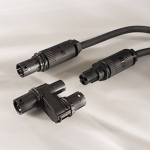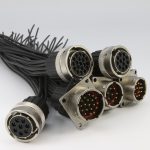
Introduction
The world of analog electronics relies heavily on the accurate modeling of Metal-Oxide-Semiconductor Field-Effect Transistors (MOSFETs). These tiny semiconductor devices are the building blocks of many high-performance analog circuits; however, any deviation from their ideal behaviour can introduce distortion, noise, or other performance limitations. Therefore, accurate MOSFET modeling is crucial for high-performance analog circuits. This blog post examines the various advanced MOSFET modeling techniques employed by engineers and designers to develop high-performance analog circuits.
Understanding MOSFET Basics
A MOSFET is a three-terminal semiconductor electronic device widely used as a voltage-controlled switch or amplifier. It consists of a gate, a source, and a drain terminal and is designed to amplify or switch electronic signals in a broad range of electronic circuits. The voltage applied to the gate terminal governs the operation and controls the current flow between the source and drain terminals. MOSFETs are commonly used in various applications, including digital logic gates, analog amplifiers, power electronics, and many other electronic devices due to their high switching speed, minimal power consumption, and small size.
Introduction to MOSFET Modeling: Exploring the Advanced Modeling Tools and Software
MOSFET modelling is a crucial analytical approach that involves creating mathematical or computational models to describe the behaviour of MOSFETs. MOSFET modeling is a critical aspect of analog circuit designing and simulating–allowing engineers to predict the behaviour of these components in different scenarios without requiring physical prototyping.
The complexity of the modeling requires specialised software tools and simulators, including SPICE – a prominent simulation tool that supports MOSFET circuit models. Additionally, TCAD (Technology Computer-Aided Design) tools offer advanced capabilities for detailed device-level simulations, enabling engineers to refine their models and optimise circuit performance.
Techniques of MOSFET Modeling for Efficient Analog Circuits:
There are various techniques and models used for MOSFET modeling in analog circuit design. Some of the most common models and techniques include:
Ideal MOSFET Model – Simplifying Analysis
The most straightforward way to model a MOSFET is to use an ideal model where the MOSFET circuit is considered a perfect switch with zero resistance between the source and drain terminals. While this model simplifies analysis, it does not account for real-world imperfections and is not suitable for high-performance analog circuit design.
Threshold Voltage (Vth) Modeling
The threshold voltage is a critical parameter in MOSFET modelling–determining the point at which the transistor switches from the off-state to the on-state. Engineers use precise measurements and modeling techniques to characterise and predict the threshold voltage accurately. This information is crucial for designing circuits that operate within specific voltage ranges.
Small-Signal Modeling
Small-signal modeling is used for linear analysis of MOSFETs, making it suitable for analog circuit design. This technique involves approximating the MOSFET’s behaviour around its operating point using linear equations. Small-signal models consider parameters like transconductance (gm) and output conductance (gds), which are essential for designing amplifiers and other analog circuits.
SPICE Simulation
Simulation tools like SPICE are widely used in the design and analysis of analog circuits. SPICE allows engineers to create complex MOSFET models that include various parasitic components and accurately simulate circuit behaviour. SPICE simulations help designers optimise their circuits for high performance while considering real-world effects.
MOSFET Noise Modeling
In high-performance analog circuits, noise is a critical factor that can degrade signal quality. Accurate MOSFET noise modeling is essential for predicting and mitigating noise sources in amplifiers, oscillators, and other sensitive applications. Engineers employ noise models that account for thermal noise, flicker noise, and other sources of interference to optimise circuit performance.
Temperature Effects Modeling
MOSFET behaviour can vary significantly with temperature, making it crucial to consider temperature effects in analog circuit design. Engineers use thermal models to predict how it’s characteristics change with temperature and design compensation techniques to maintain circuit performance over a wide temperature range.
Parasitic Component Modeling
Real-world MOSFETs exhibit parasitic components such as gate-source capacitance (Cgs) and gate-drain capacitance (Cgd). These parasitic components can affect circuit performance, especially in high-frequency applications. Engineers incorporate these parasitic components into their models to accurately predict MOSFET behaviour and optimise circuit performance.
Advanced MOSFET Models
As technology advances, MOSFET models have become more sophisticated to capture even finer details of transistor behaviour. These advanced models, such as the EKV (Enz-Krummenacher-Vittoz) model and the BSIM (Berkeley Short-channel IGFET Model), provide a high level of accuracy and are widely used in state-of-the-art analog circuit design.
Bottom Lines
Accurate MOSFET modeling is the cornerstone of high-performance analog circuit design. Engineers employ various techniques–from simple threshold voltage modeling and compact models to advanced parasitic elements modeling and transistor models like EKV and BSIM, to achieve precise results. These modeling techniques, combined with SPICE simulations, allow designers to optimise their circuits for noise, temperature, and parasitic effects, ensuring that high-performance analog circuits meet their stringent requirements. With further technological advancements, MOSFET modeling will remain a critical aspect of analog electronics–developing increasingly sophisticated and high-performance devices.





















